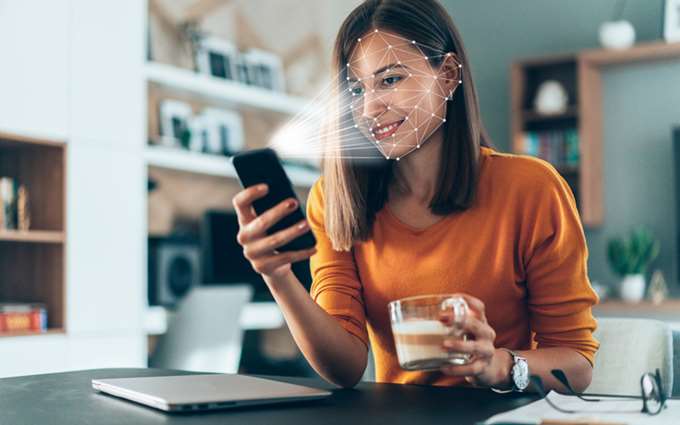Stay updated!
The best customer experience content delivered right to your inbox.
What is a Biometric SDK?
by UJET Team |
Does your customer support software offer an integrated biometrics software development kit (SDK)? Or do you require customers to verify their identity by confirming their home address or by answering a series of “security” questions that can be easily hacked?
Although these methods are widely used ways to confirm customer identities, allowing customers to verify themselves using commonly used technology like fingerprint recognition and face ID is not only more secure, it’s also faster and more convenient for the customer. These biometric identification methods enable companies to securely and quickly authenticate a customer's identity, which improves both support and in-app experiences. In this article, we’ll give you an overview of what a mobile biometric SDK is, how it works, and why your contact center needs this valuable tool.
What do biometric SDKs do?
A biometric SDK allows your company to use the built-in recognition technologies on a customer's device to confirm their identity or make a purchase from your native iOS and Android mobile apps. Consumers regularly use touch identification (ID) or facial recognition to unlock their phones and complete in-app purchases. Mobile SDKs, like those provided by UJET, give customer service centers access to these same technologies while on a call or live chat with clients.
Biometrics uses physical characteristics to identify people, such as facial recognition, retina scans, and fingerprint mapping. The most well-known biological measurement is touch identification (ID), which has been used on Apple iPhones since 2013. Samsung adopted the technology in 2014. Users simply place their fingers on the fingerprint sensor to open their cell phones or tablets. In 2017, Apple debuted facial recognition tools, so the device opens after a quick scan of the user's face.
The Pew Research Center reports that 85% of Americans own a smartphone, and Samsung and iPhone garner a combined 34% of the global market share. Considering these Your contact center has a huge opportunity to leverage integrated biometrics SDKs to optimize experiences and increase security.
Fingerprint recognition SDK & face detection SDK benefits
Software for fingerprint readers and facial ID tools give your customer service center access to cutting-edge technologies. Although your customers may not be familiar with the concept of mobile SDKs, there's a good chance they're already using face or touch ID to log into their devices and apps. Incorporating these technologies into your contact center operations supports your goal of natural, seamless customer interactions.
Allowing your clients to verify their identities using their preferred devices and authentication methods improves security and customer experiences while increasing contact center efficiencies. But the benefits of biometric SDKs don't end there. Integrated biometrics SDKs help your brand scale customer support, collect customer insights, and build your reputation.
Use integrated biometrics SDKs to improve security
Four-digit passcodes and security questions can't compete with sophisticated threat actors determined to steal private information and identities. Apple reports that the odds of guessing a typical four-digit passcode are 1 in 10,000. Therefore, using these methods puts your clients and their data at risk.
In comparison, Apple says the probability of a random person matching a fingerprint is 1 in 50,000. That possibility further decreases with facial recognition technology, with the likelihood being approximately 1 in 1,000,000.
Enhance in-app customer experiences with biometric SDKs
Users have embraced mobile apps, yet competition for their attention is stiff. You've already designed an intuitive user interface and taken every step to keep your app users engaged. But what happens when they need assistance? Can your customers reach out to your team without leaving your app?
A fingerprint sensor SDK delivers a native brand experience, so users never feel like their data gets sent to a third party. Everything happens in your app. Moreover, the right solutions are compatible with the devices your customers use, regardless of whether your target audience is full of early technology adopters or those who wait a few years between smartphone purchases. For instance, UJET's Mobile SDK supports Android 4.4 and above and iOS 9.0 and above.
Fingerprint sensor SDKs increase contact center efficiencies
Contact centers with integrated biometrics SDKs let customers verify their identity before an agent picks up the line. In that case, your software sends a request to your customer's smartphone. They can authenticate themselves in the same way they unlock their phone. Pre-session biometric identification methods eliminate the need for your representatives to spend the first minutes of a conversation confirming your caller or live chat customer is who they say they are.
Mobile SDKs also gather essential details about your customer (and their issue) before the session begins, giving your reps the data needed for a personalized approach. It reduces the time to resolution. Those offering solutions, like UJET, save shared information, such as video or photo, directly to your customer relationship management (CRM) program, decreasing after-call work (ACW).
Biometric technology: a core customer service tool
Your in-app customer service affects the user experience and impression of your brand. Mobile SDKs are one way to ensure your application receives high marks in both aspects. Deliver your promise to customers by implementing a solution with a fingerprint recognition SDK and face detection SDK. With UJET's CCaaS 3.0, your business can use face and touch ID, along with SmartActions, to optimize in-app experiences while achieving workforce productivity objectives.
The best customer experience content delivered right to your inbox.